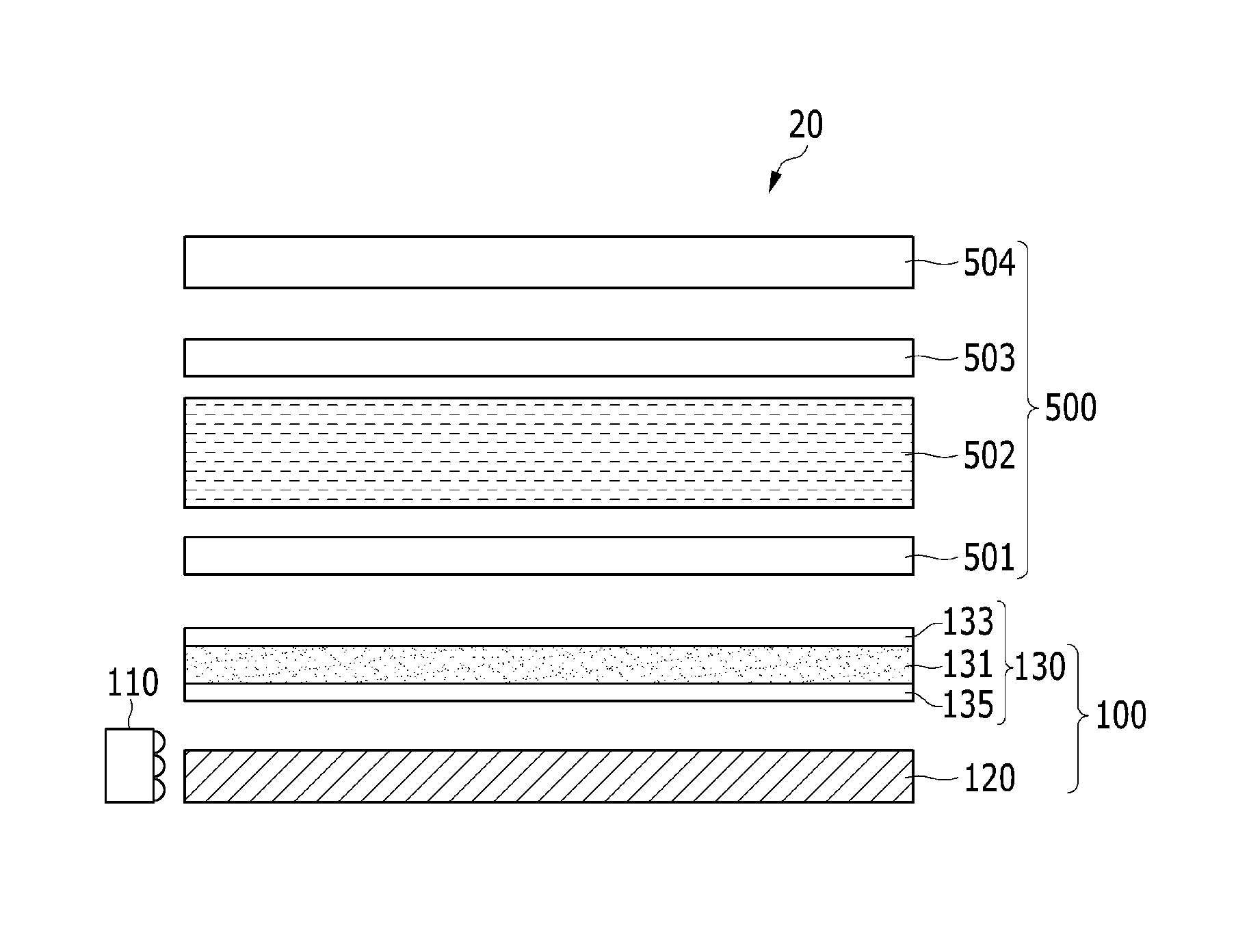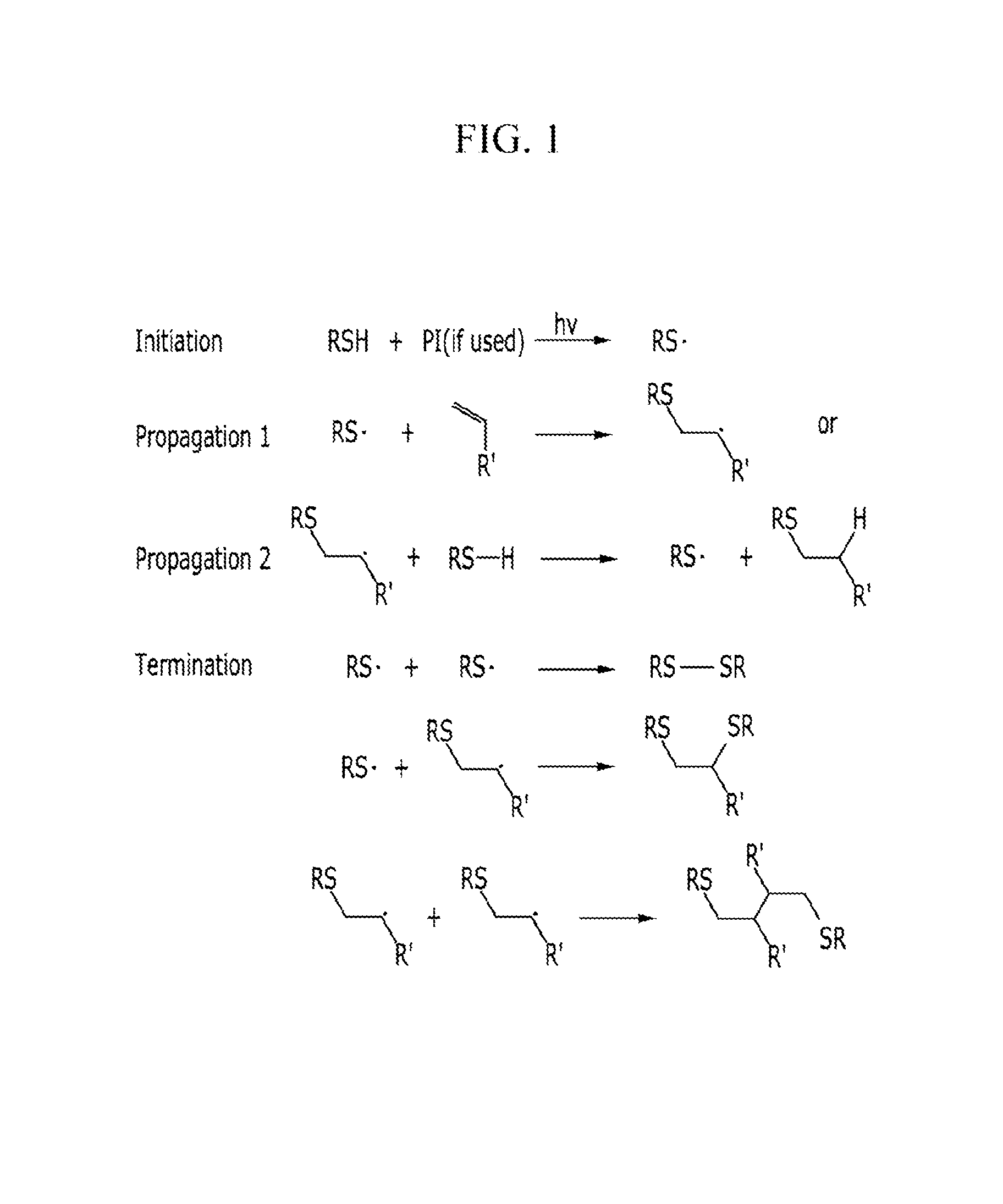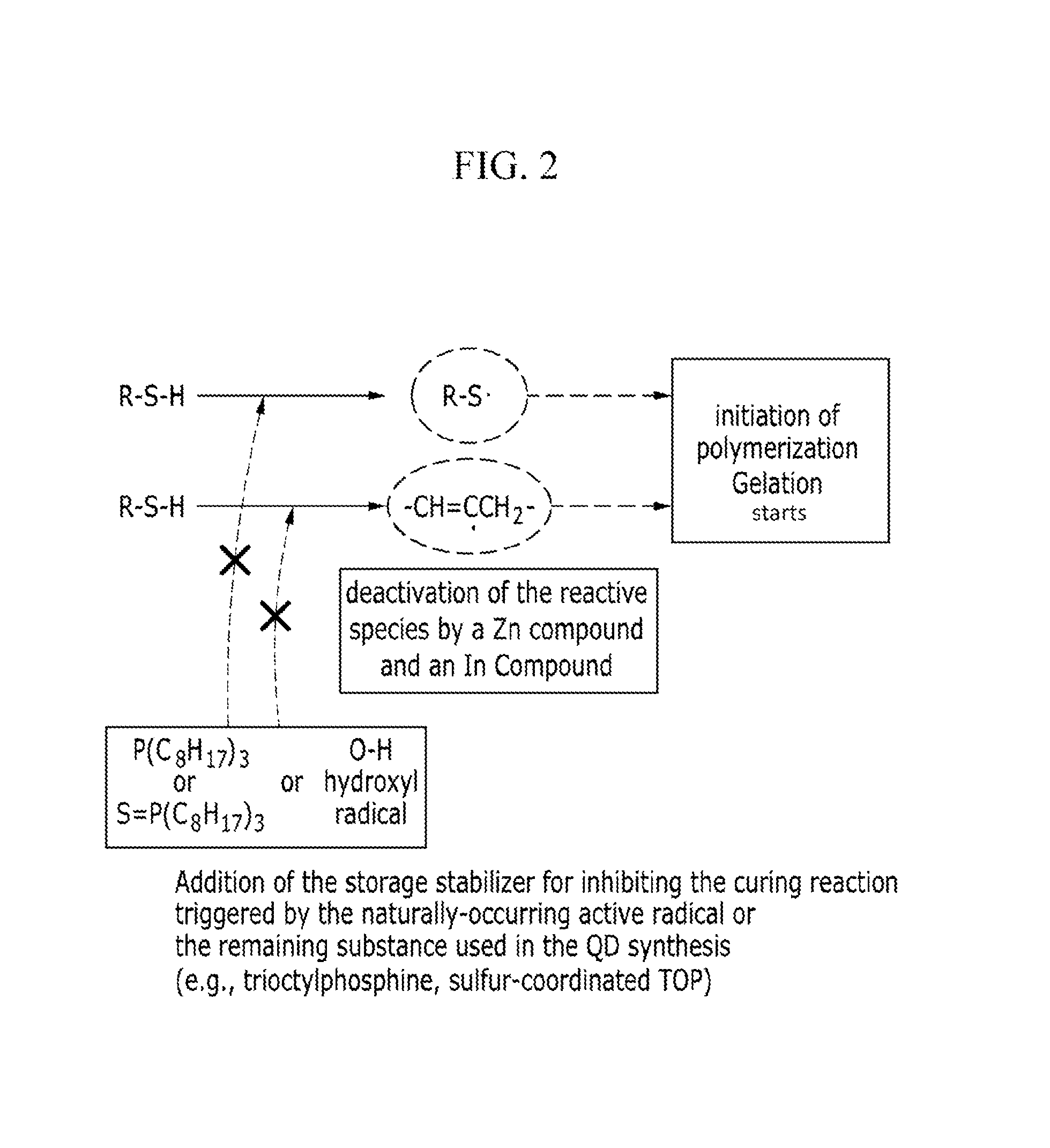Compositions and polymer composites prepared from the same
a polymer composite and composition technology, applied in the field of compositions and polymer composites prepared from the same, can solve the problems of thiol-ene system generally having poor storage stability, low luminous efficiency and brightness of semiconductor nanocrystals due to oxidation, and low luminous efficiency and brightness due to oxidation. the effect of improving storage stability
- Summary
- Abstract
- Description
- Claims
- Application Information
AI Technical Summary
Benefits of technology
Problems solved by technology
Method used
Image
Examples
example 1
Preparation of Polymer Composition and Natural Curing of Prepared Composition
[0246]100 parts by weight of a monomer mixture including pentaerythritol tetrakis(3-mercaptopropionate) (4T), tricyclodecane dimethanol diacrylate (A-DCP), and lauryl methacrylate (LMA) are prepared. The monomers are mixed in a mole ratio of 1:1.52 between a thiol group and an acrylate group in the monomer mixture. Then, 0.5 parts by weight of Irgacure 184 and 0.5 parts by weight of 2,4,6-trimethylbenzoyl-diphenyl-phosphine oxide (TPO) are added to 100 parts by weight of the monomer mixture. The finally obtained mixture is defoamed under vacuum.
[0247]Ascorbic acid, citric acid, zinc acetate, zinc stearate, ZnF2, Zn metal, or indium acetate (In(OAc)3) is added to the monomer mixture in an amount set forth in Table 1 per 100 parts by weight of the monomer mixture. In Table 1, the 184 and TPO as a photoinitiator respectively indicate Irgacure 184 and trimethylbenzoyl diphenyl phosphine oxide that is commercial...
example 2
Determination of Causes of Curing Phenomenon of the Quantum Dot Polymer Composition and Effects of Curing Inhibiting Additives
[0257]It is believed that a quantum dot polymer composition may undergo curing when the reactants used during quantum dot (QD) synthesis are not thoroughly removed in a separation process of the quantum dots (QD) via a non-solvent precipitation method. Examples of the unremoved reactant that may cause the curing may include trioctylphosphine (TOP) or sulfur-coordinated trioctylphosphine (S / TOP). The liquid chromatography-mass spectroscopy (LC-MS) analysis of a QD precipitate may confirm that the amount of the S / TOP remaining on the QDs tends to decrease as the number of precipitation / separation increases. To determine whether the curing is caused by the unremoved reactant, the following experiments are conducted: TOP or S / TOP is added to the monomer composition and the effect of a zinc compound on curing inhibition of the resulting composition is observed.
[02...
example 3
Evaluation of the Influence of the Additives on Light Emitting Characteristics (in Case where the Curing Inhibitor is Added to a Filling Resin)
[0262]A mixture including pentaerythritol tetrakis(3-mercaptopropionate) (4T) as a first monomer, lauryl methacrylate (LMA) and tricyclodecane dimethanol diacrylate (A-DCP) as a second or a fourth monomer, and 0.5 parts by weight of Irgacure 184 and 0.5 parts by weight of 2,4,6-trimethylbenzoyl-diphenyl-phosphine oxide (TPO) as an initiator per 100 parts by weight of the mixture are mixed together to obtain a monomer mixture. The monomer mixture including 4T and (LMA+A-DCP) in a ratio of 3:7 is used as a Ref. composition, and a composition A is prepared by adding 200 parts per million (ppm) of zinc acetate based on 1 part by weight of the monomer mixture of 4T:(LMA+A-DCP) in a ratio of 3:7. The Ref. composition and the composition A are used as a filling resin composition in the manufacture of the QD film.
[0263]A monomer for a quantum dot res...
PUM
| Property | Measurement | Unit |
|---|---|---|
| pKa | aaaaa | aaaaa |
| quantum efficiency | aaaaa | aaaaa |
| FWHM | aaaaa | aaaaa |
Abstract
Description
Claims
Application Information
 Login to View More
Login to View More - R&D
- Intellectual Property
- Life Sciences
- Materials
- Tech Scout
- Unparalleled Data Quality
- Higher Quality Content
- 60% Fewer Hallucinations
Browse by: Latest US Patents, China's latest patents, Technical Efficacy Thesaurus, Application Domain, Technology Topic, Popular Technical Reports.
© 2025 PatSnap. All rights reserved.Legal|Privacy policy|Modern Slavery Act Transparency Statement|Sitemap|About US| Contact US: help@patsnap.com



